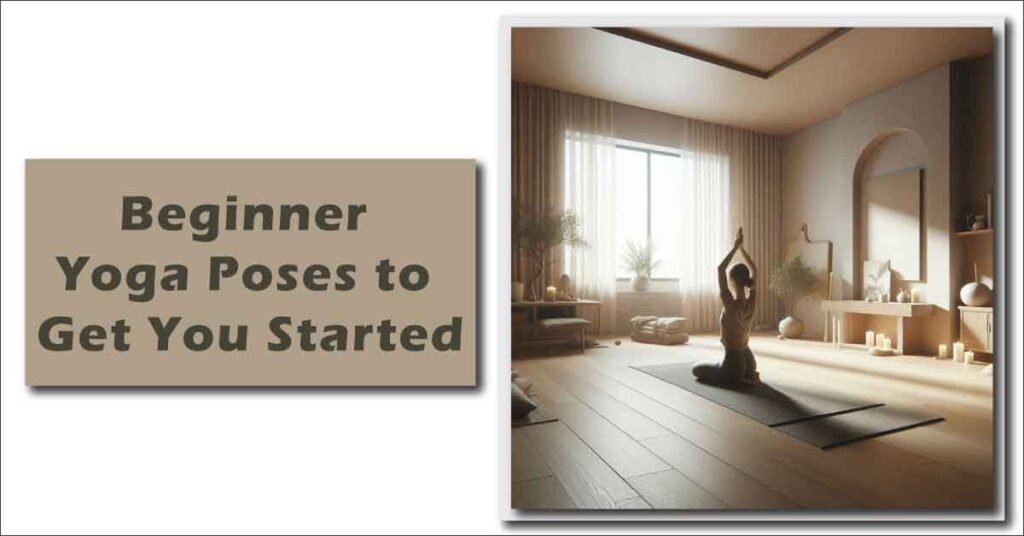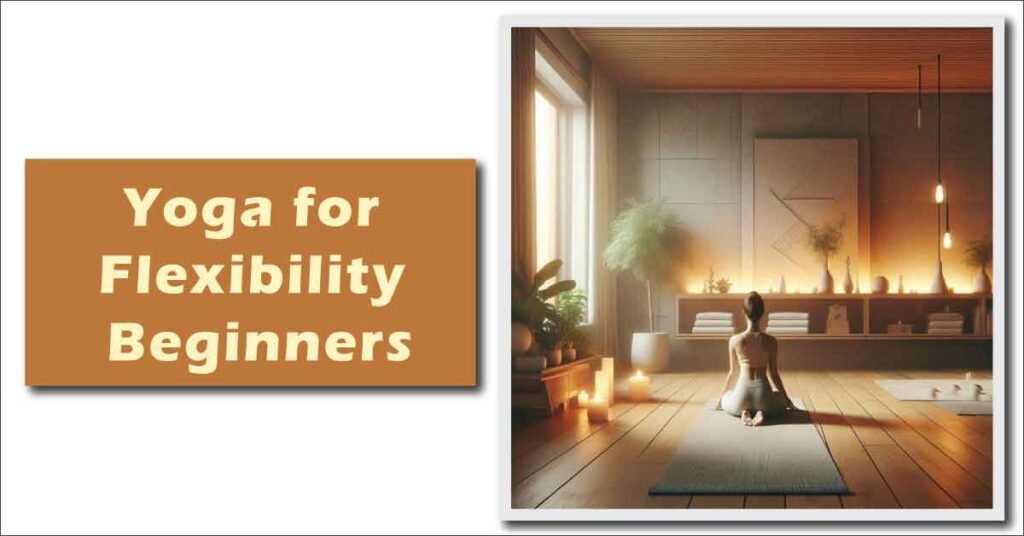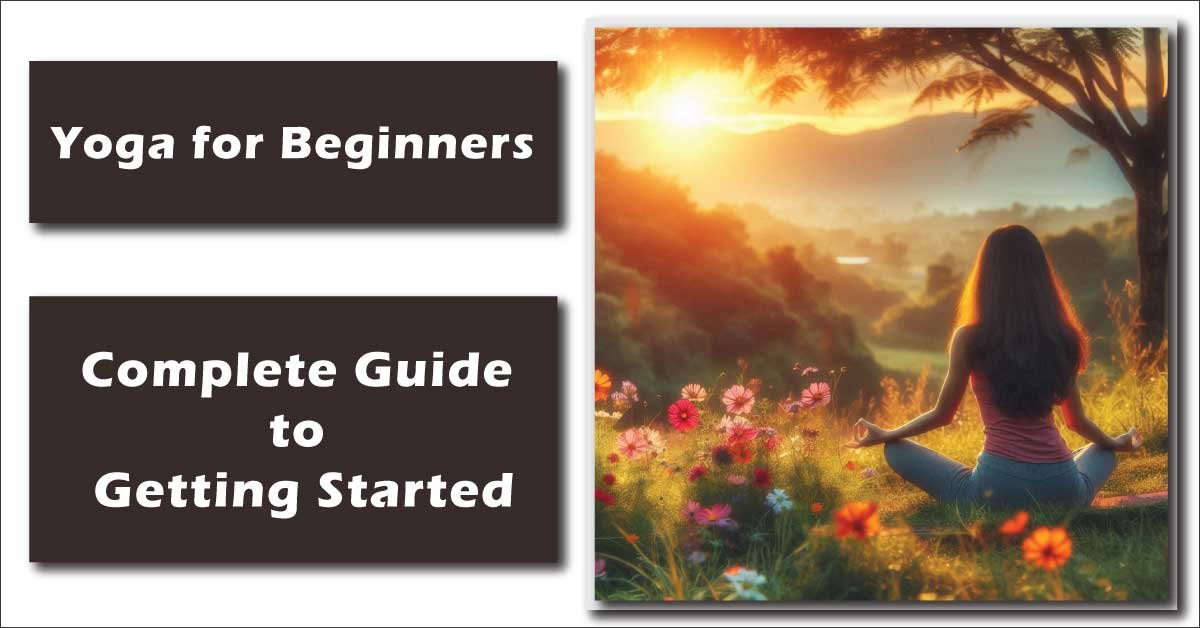Yoga has been practiced for thousands of years, yet it remains one of the best ways to cultivate physical, mental, and spiritual well-being. If you’re new to yoga, this article is designed to introduce you to yoga for beginners. Whether you’re looking to improve your flexibility, reduce stress, or start a simple yoga practice at home, this guide will cover everything you need to know. We’ll explore beginner yoga poses, yoga stretches for beginners, and gentle sequences that are perfect for anyone starting out.
Let’s dive into the basics and learn how you can begin your yoga journey!
Why Start Yoga for Beginners?
Yoga offers numerous benefits, both physical and mental. You don’t need to be flexible or fit to start practicing yoga. It is accessible to everyone, regardless of age, body type, or fitness level. Many people believe that they need to be able to touch their toes or do advanced poses, but this is far from the truth. The primary purpose of beginner yoga is to introduce the body and mind to gentle movements that help build strength, increase flexibility, and bring a sense of calm and focus.
Benefits of Beginner Yoga:
1- Improved Flexibility: Yoga for flexibility beginners focuses on slow, gentle movements, which gradually improve the flexibility of muscles and joints.
2- Stress Relief: Gentle yoga for beginners promotes relaxation by connecting the breath with movement, helping reduce anxiety and stress.
3- Increased Strength: Even beginner yoga poses work to strengthen your core, legs, arms, and back, supporting overall fitness.
4- Mental Clarity: The mindfulness aspect of yoga improves focus and concentration, making it a great way to start or end your day with mental clarity.
Yoga Basics for Beginners: What You Need to Know
Before jumping into specific poses, it’s helpful to know a few yoga basics for beginners. These foundational elements will make your practice more enjoyable and effective.
1. Breathwork (Pranayama)
Breathing is central to all yoga practices. The breath connects the mind and body and is used to deepen your movements. In yoga for beginners at home, learning to coordinate your breath with each movement is essential. Begin with deep belly breaths, inhaling through the nose and exhaling through the mouth. As you progress, you’ll learn different types of pranayama techniques to calm the mind and energize the body.
2. The Importance of Alignment
Proper alignment is crucial to avoid injury and maximize the benefits of each pose. When practicing beginner yoga poses, focus on maintaining correct posture. You don’t need to go deep into the poses—just ensure that your body is aligned properly.
3. Using Props
For beginners, using yoga props such as blocks, straps, and bolsters can make the poses more accessible. These tools help beginners achieve the correct alignment without straining the body.
4. Setting Up a Yoga Space at Home
One of the best things about yoga is that it can be done anywhere. For yoga for beginners at home, create a comfortable space with a non-slip yoga mat, some open space to move, and perhaps calming elements like candles or soft music. Consistency is key, so make your practice space inviting to encourage regular sessions.

Beginner Yoga Poses to Get You Started
Now that you know the basics, it’s time to move into the poses. These beginner yoga poses will help you develop flexibility, strength, and balance.
1. Mountain Pose (Tadasana) Mountain Pose is a foundational posture for many standing poses. It helps with balance and teaches body awareness.
Stand with feet together, or hip-width apart if it’s more comfortable.
Engage your thighs, lift through your spine, and reach your arms by your sides with palms facing forward.
Take deep breaths, lifting your chest and grounding through your feet.
2. Child’s Pose (Balasana) A resting pose that gently stretches the back and hips, Child’s Pose is ideal for yoga stretches for beginners.
Start on your hands and knees.
Sit back on your heels, bringing your forehead to the mat.
Extend your arms forward, or rest them beside your body.
3. Downward-Facing Dog (Adho Mukha Svanasana) One of the best yoga poses for beginners, Downward-Facing Dog strengthens the arms and legs while stretching the back.
From all fours, tuck your toes and lift your hips towards the ceiling.
Keep your hands shoulder-width apart and feet hip-width apart.
Press your palms into the mat, and try to straighten your legs as much as possible.
4. Warrior I (Virabhadrasana I) This standing pose builds strength in the legs and opens the chest and hips.
Step one foot forward, bending the knee while keeping the back leg straight.
Raise your arms overhead, with your palms facing each other.
Square your hips to the front and breathe deeply.
5. Cat-Cow Pose (Marjaryasana-Bitilasana) This gentle movement is perfect for beginners as it warms up the spine and improves flexibility.
Start on your hands and knees, with wrists under shoulders and knees under hips.
Inhale as you arch your back, lifting your head and tailbone (Cow Pose).
Exhale as you round your spine and tuck your chin to your chest (Cat Pose).
6. Corpse Pose (Savasana) Corpse Pose is typically done at the end of a yoga session to allow the body and mind to relax completely.
Lie flat on your back with your legs extended and arms at your sides.
Close your eyes and focus on your breath, allowing your body to sink into the mat.
These are just a few of the best yoga poses for beginners. The key is to practice these poses slowly, focusing on alignment and breath control.
Simple Yoga Sequence for Beginners
If you are looking for a beginner yoga sequence to practice at home, try this gentle flow. It incorporates yoga stretches for beginners and focuses on balance, flexibility, and relaxation.
1. Start in Child’s Pose (Balasana)
- Rest in this pose for 1-2 minutes, focusing on deep breaths.
2. Transition to Cat-Cow Pose (Marjaryasana-Bitilasana)
- Move into Cat-Cow Pose, repeating the movement for 5-6 breaths. This warms up the spine.
3. Move into Downward-Facing Dog (Adho Mukha Svanasana)
- From all fours, lift your hips into Downward-Facing Dog. Hold for 3-5 breaths.
4. Stand Up in Mountain Pose (Tadasana)
- Step forward and come to standing. Hold Mountain Pose, grounding yourself for 1-2 minutes.
5. Flow into Warrior I (Virabhadrasana I)
- Step your right foot forward into Warrior I. Hold for 5 breaths, then switch to the left side.
6. End in Corpse Pose (Savasana)
- Finish your sequence by lying on your back in Corpse Pose. Rest here for 3-5 minutes, allowing your body to absorb the benefits of your practice.
Discover the power of endurance exercises to elevate your fitness journey. Learn how these routines build stamina and resilience in our comprehensive guide. Explore more for lasting fitness gains!
Tips for Yoga Beginners
Starting yoga can feel overwhelming, but these tips can help you stay on track and enjoy your practice:
Take it Slow: Yoga is not about perfection; it’s about progress. Start slow and build your strength and flexibility over time.
Consistency Matters: Even 10 minutes of yoga a day can make a difference. Aim for consistency rather than long, infrequent sessions.
Modify When Needed: Don’t be afraid to modify poses to suit your body. Yoga props can make poses more accessible for beginners.
Focus on Your Breath: Yoga is as much about the breath as it is about the body. Focus on inhaling and exhaling deeply during each pose.
Listen to Your Body: Don’t push yourself too hard. If a pose feels uncomfortable, ease back or take a rest.

Yoga for Flexibility Beginners
One of the main reasons people start practicing yoga is to improve their flexibility. If you’re looking for yoga for flexibility beginners, start with gentle poses like Cat-Cow, Downward Dog, and Child’s Pose. These poses stretch the muscles without putting too much strain on the body.
Over time, as your flexibility improves, you can explore more advanced poses like Triangle Pose (Trikonasana) or Half Split (Ardha Hanumanasana). Always remember, flexibility is a gradual process. Regular practice will allow your muscles to stretch naturally, reducing the risk of injury.
Gentle Yoga for Beginners
Gentle yoga for beginners focuses on slow movements, deep stretching, and breath control. It is ideal for those who are new to yoga or looking for a low-impact practice. Poses like Corpse Pose, Child’s Pose, and seated forward bends are examples of gentle yoga postures. You can practice gentle yoga daily, as it doesn’t strain the muscles or joints.
Conclusion on Yoga for Beginners
Yoga is an incredible practice that benefits both the mind and body. Whether you’re practicing yoga for flexibility, relaxation, or simply for a bit of exercise, yoga for beginners is accessible to everyone. By starting with simple yoga poses and building a consistent practice at home, you’ll notice improvements in your strength, flexibility, and overall well-being.
Remember to listen to your body, take things slowly, and enjoy the journey. Yoga is a lifelong practice, and with regular effort, you’ll experience its transformative effects. So grab your mat, create a peaceful space at home, and begin your yoga journey today. Greetings|
Unleash your potential with CrossFit WOD (Workout of the Day). These dynamic routines challenge your strength and endurance daily. Dive into our full post to master your fitness goals!

